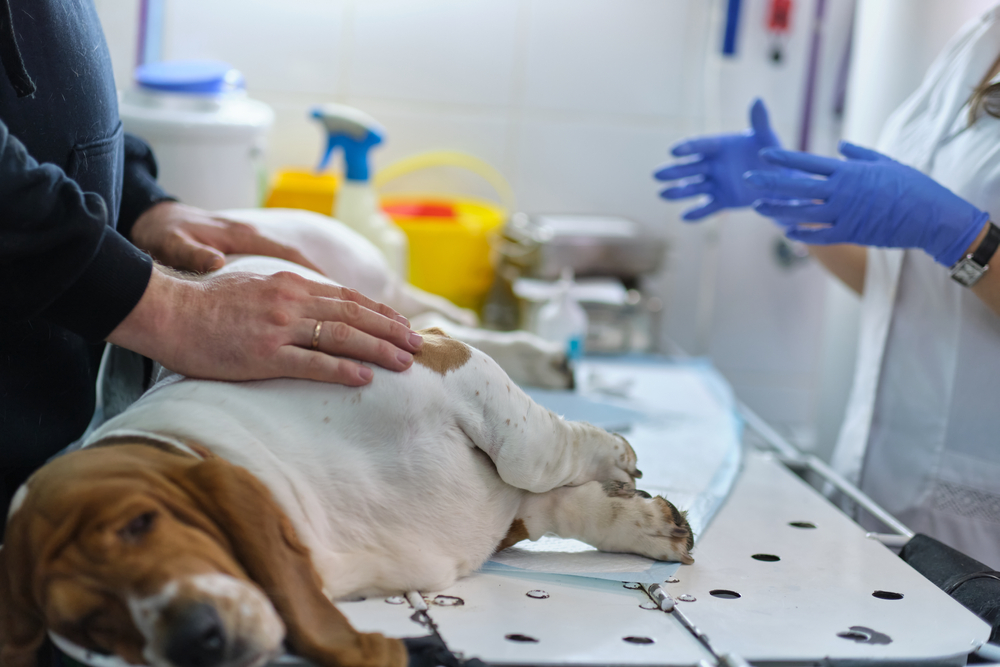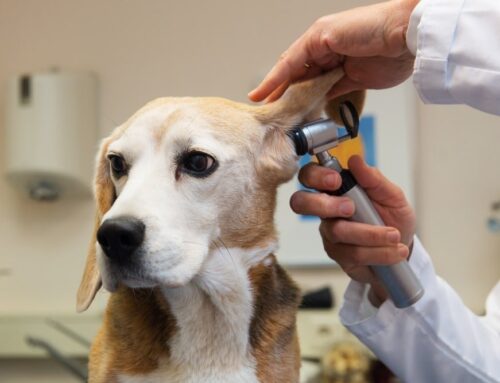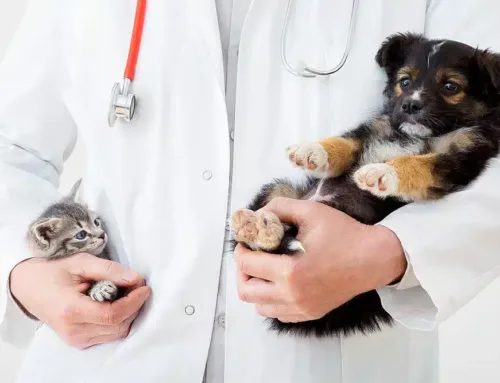Spaying female pets, which we recommend before their first heat cycle to significantly reduce their mammary cancer risk, also provides another life-saving benefit—pyometra prevention. A pyometra is a uterine infection that can rapidly turn life-threatening if not treated. To better care for your female pet, learn about pyometra causes, signs, and prevention.
Pyometra causes in pets
A pyometra is a bacterial uterine infection, but the process is more complicated. When a female pet goes through a heat cycle, her body releases hormones (i.e., progesterone and estrogen) that change the uterus. Over time, the uterine lining (i.e., endometrium) becomes so thick that cysts form (i.e., cystic endometrial hyperplasia).
Then, the cystic endometrium begins to leak fluid, but the newly thick lining prevents the uterine muscles from contracting strongly enough to evacuate all the fluid. This fluid becomes the perfect bacterial breeding ground.
To compound matters, infection-fighting white blood cells become absent during a pet’s heat cycle to allow sperm to travel safely through the open cervix. Vaginal bacteria, a urinary tract infection, or fecal contamination, then set up shop and trigger a pyometra.
In many cases, the cervix closes back up before infection progresses and becomes noticeable, trapping bacteria and pus inside. Closed pyometras are much more severe than open pyometras, as the bacteria can infiltrate the bloodstream and cause sepsis and organ failure.
Pyometra signs in pets
A pyometra typically develops a month or two after a pet’s heat cycle. However, early signs are not always obvious, especially in affected cats. Initial signs are often subtle and nonspecific and include lethargy and a decreased appetite. As the pyometra worsens, you may notice the following signs:
- Bloody vaginal discharge
- Increased thirst and urination
- Vomiting
- Excessive licking of the vulva
- Pale mucous membranes
- Swollen or painful abdomen
- Weakness or collapse
Bloody vaginal discharge is an obvious sign, but many pets will have a closed cervix, so the discharge may not be present. If you have an intact female pet who seems ill or has vaginal discharge, she needs to be examined immediately. A pyometra is always on the list of differential diagnoses for an ill, unspayed female pet, as the condition can rapidly turn life-threatening.
Pyometra diagnosis in pets
When an intact female pet presents with a history of feeling unwell or has obvious bloody vaginal discharge, a pyometra is always at the top of the suspicious causes list. If the cervix is closed and no discharge is present, additional diagnostic testing is likely needed to confirm a pyometra diagnosis. Testing to evaluate your pet’s health status will also be essential for formulating an appropriate treatment plan.
To achieve an accurate diagnosis and assess your pet’s health status, we may recommend the following tests:
- Complete blood count (CBC)
- Blood chemistry profile
- Urinalysis
- Vaginal cytology
- Abdominal X-rays
- Abdominal ultrasound
These tests will check for signs of infection, inflammation, or a fluid-filled uterus. While X-rays can show an enlarged uterus, an abdominal ultrasound is often needed to confirm a pyometra diagnosis.
Pyometra treatment for pets
A pyometra is a medical emergency that can prove fatal without prompt treatment. Depending on the pet’s condition, they may need stabilization before a spay surgery can be performed, but once the pet is stable, their pus-filled uterus is carefully removed to limit infection. This therapy typically results in a rapid recovery, and postoperative instructions will closely follow a routine spay. The spay will also benefit the pet by negating their risks for ovarian and uterine cancer, and unwanted pregnancies.
In rare cases, the veterinarian may choose medical treatment that consists of prostaglandins and antibiotics to preserve the pet’s breeding capabilities, but the pet can suffer from abdominal pain, vomiting, high heart rate, panting, breathing difficulties, and fever until the medication takes effect. These pets are also at risk for developing pyometra again when their treatment is finished and should ultimately be spayed to prevent future uterine infections.
Pyometra prevention for pets

Preventing a pyometra is as simple as spaying your pet at the appropriate age. Older, intact pets adopted from animal shelters or from rescue situations can also benefit from pyometra prevention, although being spayed later in life still leaves them at an increased risk for mammary tumor development.
While removing the uterus and ovaries via spaying should prevent a pyometra, a stump pyometra can develop—but rarely—if a uterine body segment (i.e., horn) is left behind, or a minuscule amount of ovarian tissue is missed.
The best way to prevent a pyometra in your female pet is to spay them at the appropriate age. Give our Emerald Animal Hospital team a call to discuss the right time to spay your four-legged friend and help ensure they never suffer from a pyometra.









Leave A Comment